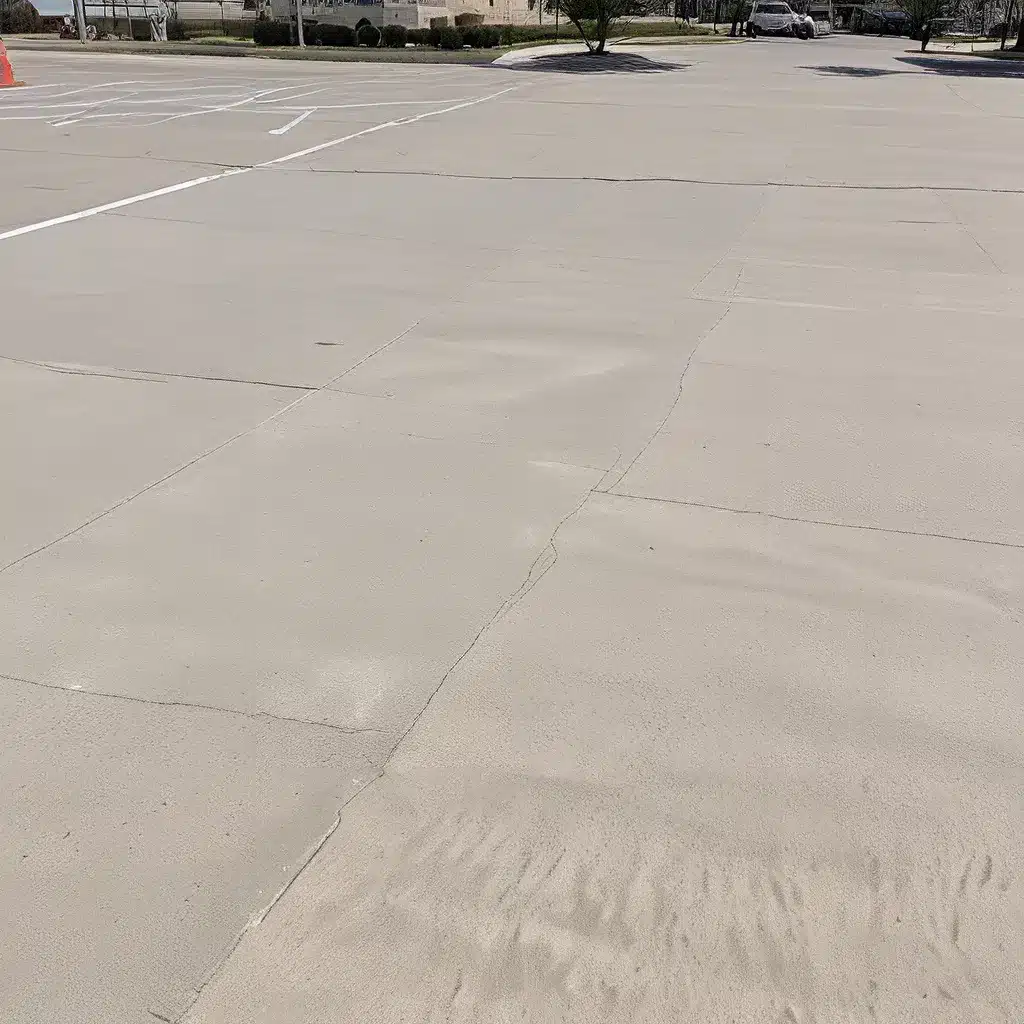
Importance of Slip-Resistant Concrete in Parking Lots
When it comes to community safety, the performance and condition of pavement play a crucial role. Residents and commuters in Kansas City deserve smooth, well-maintained surfaces that reduce the risks of collisions, falls, and tripping hazards. Among the various paving materials available, concrete stands out as an exceptional choice, offering the longest lifespan and the lowest life-cycle cost compared to alternatives like asphalt.
Concrete pavements are constructed using a system of joints that control breaking and cracking, ensuring a smooth, safe surface over their lifespan. However, maintaining adequate slip resistance is crucial, especially in high-traffic areas like parking lot entrances, where wet conditions can increase the risk of accidents.
Enhancing Slip Resistance through Surface Texturing
The skid resistance of pavement material is a key factor in road safety, particularly when the surface is wet. Reducing the number of accidents caused by skidding can be achieved through surface texturing for concrete pavements.
Concrete’s inherent qualities already make it a skid-resistant paving material, thanks to its abrasive ingredients. However, further surface texturing can enhance its frictional qualities even more. One effective method is burlap dragging, which involves dragging burlaps behind the slip-form machine before straight edging and attaching more layers of burlap to the curing and texturing machines. This process creates a more finished pavement texture with increased slip resistance.
Another approach is to focus on the pavement mixture design, reducing the cement-water ratio and increasing the cement factor to produce a more water-resistant surface. Additionally, incorporating a fine aggregate with 25% siliceous particle content can withstand the wearing effects of constant traffic, further enhancing the pavement’s skid resistance.
Designing Safer Parking Lot Entrances
Parking lots are inherently high-risk areas for accidents, with a range of potential hazards, including cars backing out, pedestrians walking, shopping carts, and drivers circling for parking spaces. Ensuring the safety of both drivers and pedestrians is crucial in the design of these spaces.
One key strategy is to separate pedestrian and vehicle traffic as much as possible. This can be achieved by adding sidewalks between the noses of vehicles, keeping pedestrians away from the traffic area and allowing them to walk safely from their cars to their destinations. These sidewalks should be constructed with a gravel and sand aggregate mix to achieve a compressive strength of at least 3,500 pounds per square inch (psi).
Another design consideration is to raise the walkways at the crossings, eliminating the need for a step and making the pedestrian sidewalk universally friendly while also slowing down traffic. Alternatively, the curbs and longer slope transitions can be lowered back to grade, eliminating the need for a separate handicap ramp at the intersection.
Concrete Pavement Thickness and Maintenance
The thickness of the concrete pavement plays a crucial role in the long-term performance and safety of a parking lot. For light vehicle parking lots, a thickness of 4 inches is typically recommended, while heavier and larger vehicles require a pavement thickness of 5 to 6 inches.
Proper maintenance is also essential to ensure the continued safety and slip resistance of concrete pavements. Newly poured cement pavement should be free from traffic for at least 7 days in the winter and 3 days in the summer, allowing it to reach a compressive strength of around 3,000 psi before taking on any loads. Additionally, sealing the surface with linseed oil can help reduce the risk of surface spalling and breaking.
Concrete contractors in Kansas City like KE Flatwork LLC are well-versed in the installation and maintenance of slip-resistant concrete pavements. Their team of experienced project managers and engineers can help ensure the safety of your parking lot entrances, sidewalks, and other concrete infrastructure through the use of advanced materials and techniques.
Improving Walkability and Accessibility
Beyond the safety considerations, designing child-friendly and age-friendly concrete infrastructure can significantly enhance the overall walkability and accessibility of a community. By focusing on the needs of pedestrians, including children, seniors, and individuals with disabilities, cities can create environments that promote active transportation, social interaction, and overall well-being.
Key elements of a pedestrian-friendly infrastructure include continuous sidewalks, well-designed crossings, cycle tracks separated from vehicular traffic, and interconnected walking and cycling networks. These features not only improve safety but also encourage active mobility, reduce greenhouse gas emissions, and foster a healthier, more inclusive community.
Conclusion: Prioritizing Concrete Safety and Accessibility
In the bustling city of Kansas City, concrete pavements play a vital role in maintaining community safety and accessibility. By focusing on enhancing slip resistance through surface texturing, thoughtful parking lot design, and proper maintenance, concrete contractors can help reduce the risk of accidents and injuries while providing a durable, long-lasting solution for the city’s infrastructure needs.
Furthermore, by incorporating child-friendly and age-friendly elements into the design of concrete sidewalks, crossings, and other pedestrian infrastructure, Kansas City can create a more walkable, inclusive, and sustainable urban environment. This holistic approach to concrete services not only benefits the community’s safety but also contributes to its overall livability and quality of life.
As a trusted concrete contractor in Kansas City, our team is committed to delivering high-quality, slip-resistant concrete solutions that prioritize safety, accessibility, and community well-being. By partnering with us, you can be confident in the long-term performance and safety of your concrete infrastructure, ensuring a safer, more vibrant Kansas City for all.

